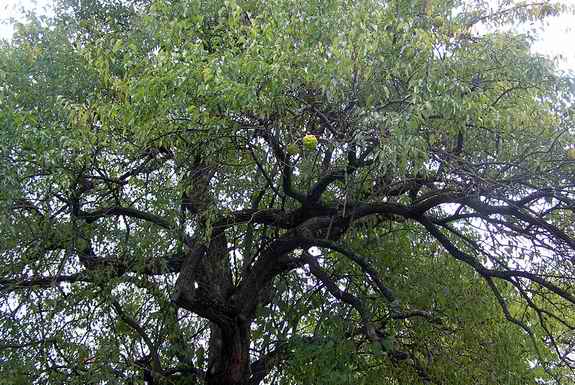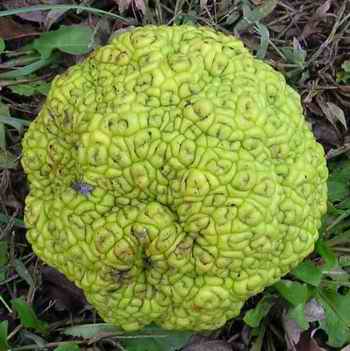|
Common Name: Osage Orange (The Osage Indians [from Wazhazhe, "war people"] were the original inhabitants of the tree's indigenous range in the Southern Great Plains, Orange relates to the aroma and the shape of the wrinkled fruit) Bodark, Hedge Apple Scientific Name: Maclura pomifera (Genus Maclura from William Maclure, American geologist, 1763-1840; pomifera is from Latin pomifer meaning fruit bearing)
Potpourri: The wood of the Osage Orange is heavy, hard and strong, ideally suited for bows and it was employed to this end by the Osage Indians. French explorers named the tree "bois d'arc" meaning "wood of the bow" from which the name Bodark was derived. To the Indians, a Bodark bow was worth a horse and a blanket.
Before the invention of barbed wire in the 1880's, the Osage Orange was planted in hedges to contain farm animals. The dense mass was "pig tight, horse high and bull strong." The name Hedge Apple derives from this application.
When Lewis and Clark reached St. Louis in 1804, they were so impressed by the versatile and durable Osage Orange tree that it was the first specimen that they sent east.
The large fruits of the Osage Orange were sliced in half and placed in the house to kill flies and around basement windows to discourage entry by insects. The fruit contains 2,3,4,5-tetrahydroxystibene that has been demonstrated to repel insects for up to two months Because the wood is so strong and dense and is inherently resistant to insects, fence posts made from the wood of the Osage Orange have lasted as long as 50 years without rotting. |

